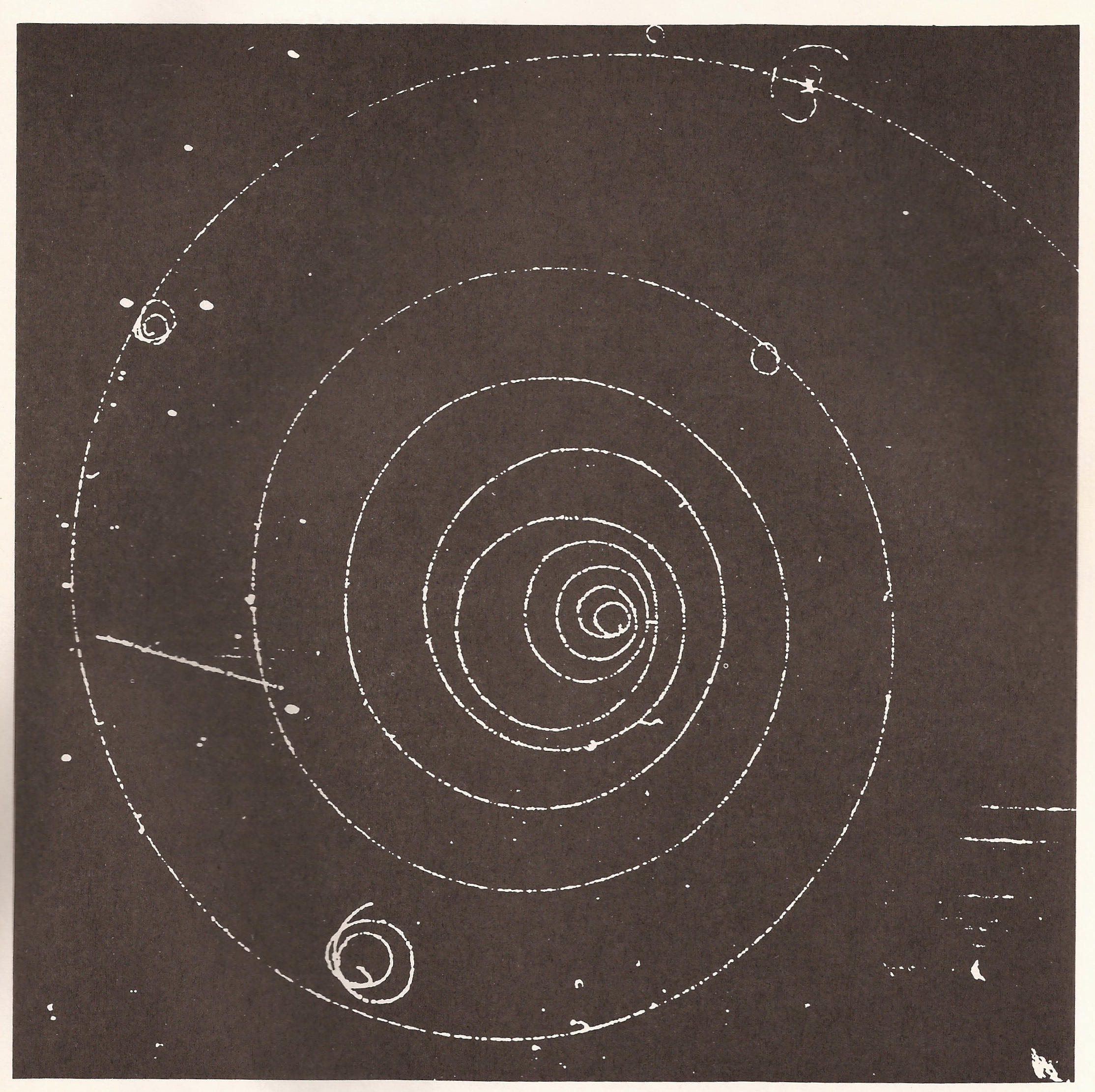Physics 105 Homework
|
|
||
|
What's in your computer? Lots of tiny little capacitors and resistors, and some black squares that contain lots and lots of even tinier resistors, capacitors and transistors. It's a little hard to see, but the writing on the board in the lower left says R143 and R144 and C145, etc. These are resistors 143 and 144 and Capacitor 145 respectively. Try zooming in with your browser. You can see quite a bit of detail.
|
The photograph below shows a track produced by an electron moving through a bubble chamber. A magnetic field causes the electron to move in a circular path, but the electron loses energy as it interacts with the liquid hydrogen in the chamber. As a result, the electron moves in a spiral. A bubble chamber contains superheated liquid hydrogen. The hydrogen is above its boiling point, but if prepared carefully it does not boil. As the electron travels through the liquid hydrogen it ionizes the hydrogen atoms and the ions produced act as "nucleation" sites for bubble formation. According to physics legend, the inspiration for the bubble chamber came when the inventor (Donald Glaser - Nobel Prize 1960) was watching bubble formation on the sides of a glass of beer. Apparently this story is not true although Glaser says he used beer to fill the chamber in some early experiments to test its feasibility. In any case, the legend has inspired many a physcist to comtemplate the intracacies of a glass of beer. The magnetic field was produced by a 17 ton magnet producing a field of 1.2 T. The speed of the electron as it enters the chamber is very close to c, the speed of light.
|

